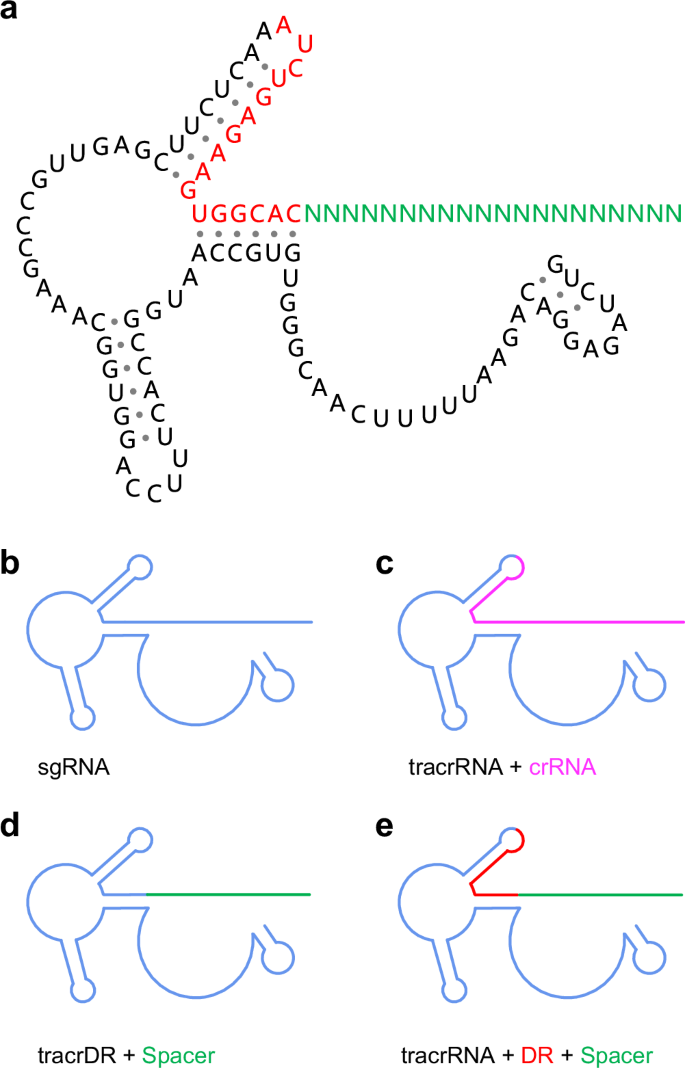Regulating cleavage activity and enabling microRNA detection with split sgRNA in Cas12b
Regulating cleavage activity and enabling microRNA detection with split sgRNA in Cas12b
Wang, J. Q.; Ye, X. F.; Liu, Y. F.; Li, W. T.; Zhang, X.; Zhang, W.; Yi, C. Q.; Liu, C. X.*
Nature Communications, 2025
https://doi.org/10.1038/s41467-025-61748-4

Abstract. The CRISPR-Cas12b system has revolutionized molecular diagnostics, yet its reliance on single guide RNAs (sgRNAs) exceeding 100 nt limits precise regulation and applications. We present a split sgRNA strategy for Cas12b, utilizing universal components with customizable Spacer to detect various nucleic acid targets by simply replacing Spacer. Glyoxal labeling of the universal split direct repeat (DR) region represses Cas12b activity, which is restored by elevated temperatures or prolonged incubation, enabling dynamic regulation. Incorporating a photo-cleavable linker into the DR allows UV-mediated modulation, ensuring compatibility with recombinase polymerase amplification. Successful detection of Epstein-Barr virus in clinical plasma samples matched the sensitivity of traditional qPCR. Importantly, microRNAs can replace the Spacer, enabling direct detection without reverse transcription or amplification. Supported by evidence from cultured cells and plasma from healthy individuals and colorectal cancer patients, this method yields consistent results with RT-qPCR while simplifying protocols. This split strategy enhances Cas12b systems, offering a promising approach for clinical nucleic acid analysis.

